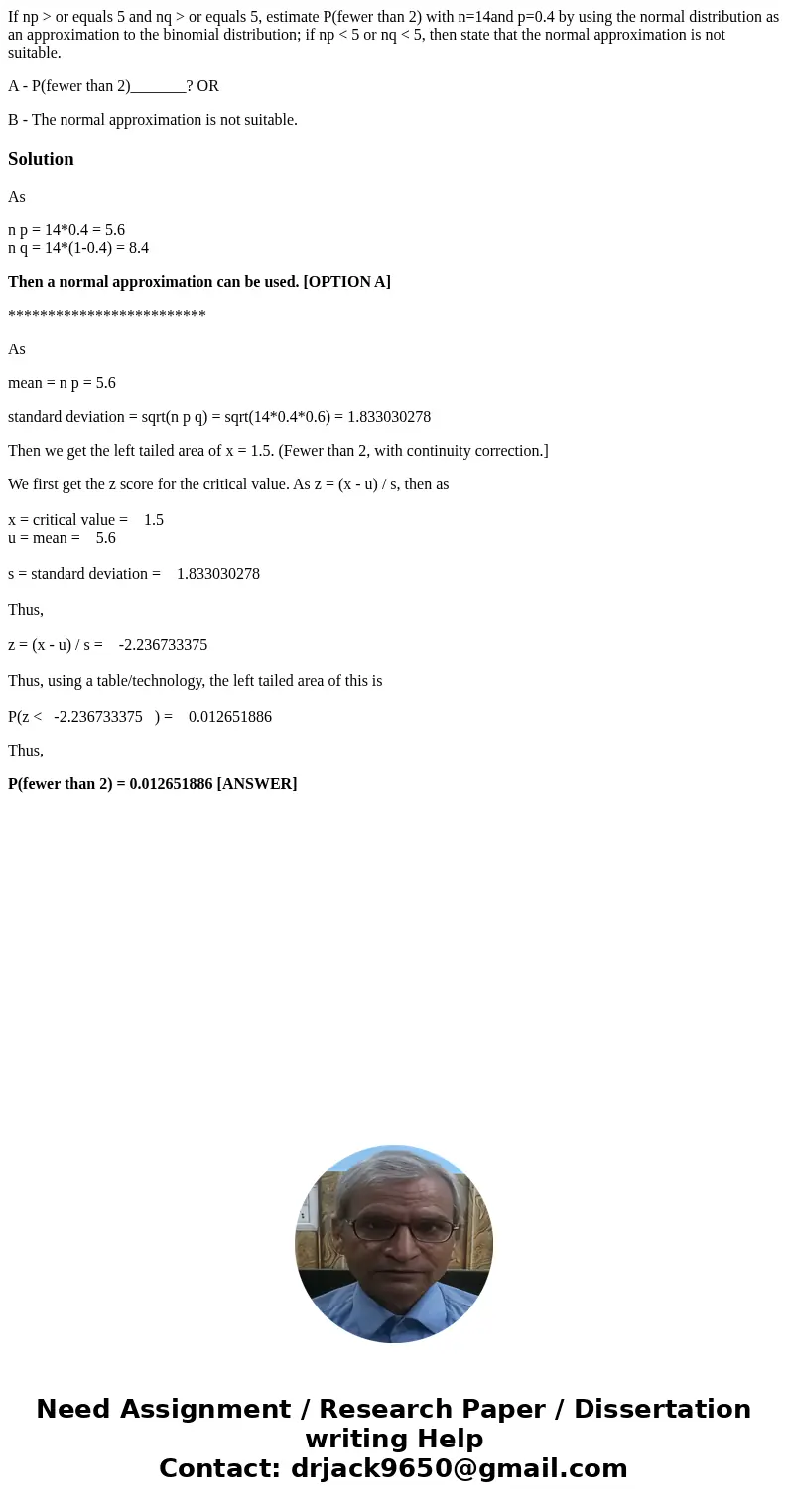If np or equals 5 and nq or equals 5 estimate Pfewer than
If np > or equals 5 and nq > or equals 5, estimate P(fewer than 2) with n=14and p=0.4 by using the normal distribution as an approximation to the binomial distribution; if np < 5 or nq < 5, then state that the normal approximation is not suitable.
A - P(fewer than 2)_______? OR
B - The normal approximation is not suitable.
Solution
As
n p = 14*0.4 = 5.6
n q = 14*(1-0.4) = 8.4
Then a normal approximation can be used. [OPTION A]
*************************
As
mean = n p = 5.6
standard deviation = sqrt(n p q) = sqrt(14*0.4*0.6) = 1.833030278
Then we get the left tailed area of x = 1.5. (Fewer than 2, with continuity correction.]
We first get the z score for the critical value. As z = (x - u) / s, then as
x = critical value = 1.5
u = mean = 5.6
s = standard deviation = 1.833030278
Thus,
z = (x - u) / s = -2.236733375
Thus, using a table/technology, the left tailed area of this is
P(z < -2.236733375 ) = 0.012651886
Thus,
P(fewer than 2) = 0.012651886 [ANSWER]

 Homework Sourse
Homework Sourse